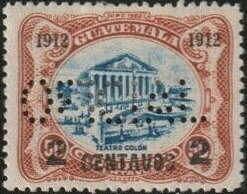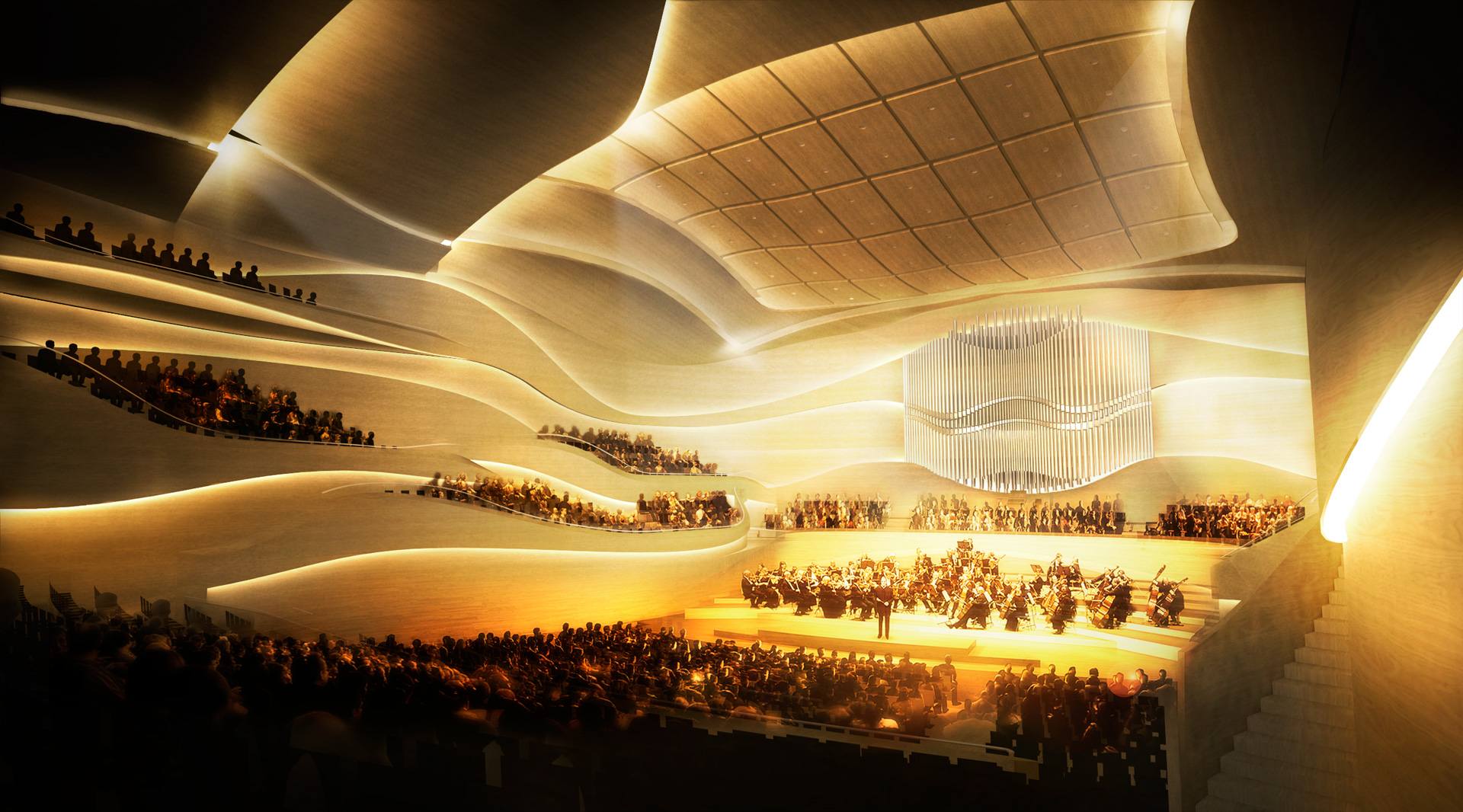Stamp: Colón Theater, Guatemala City - 2c on 50c (Guatemala 1912)
Colón Theater, Guatemala City - 2c on 50c (Guatemala 1912)
01 September (Guatemala ) within release Official - 1912 perf issue goes into circulation Stamp Colón Theater, Guatemala City - 2c on 50c face value 2 Guatemalan centavo
| Stamp Colón Theater, Guatemala City - 2c on 50c in catalogues | |
|---|---|
| Colnect codes: | Col: GT O1912-05 |
Stamp is horizontal format.
Definitive stamp perforated "OFICIAL" for use on external mail sent from government offices in Guatemala City. The perfin was applied to stamps requisitioned from available stocks, so the issue date given here is approximate. The perfin may exist upright, inverted, reversed and reversed inverted. This stamp was footnoted by Sn in 2009 but not in 2021, although the latter edition mentions that any 1912-1926 Guatemala stamps may exist with this perfin. Forged perfins may exist.Also in the issue Official - 1912 perf issue:
- Stamp - Artillery barracks - 5c on 75c face value 5;
- Stamp - Cathedral of Guatemala City - 1c on 20c face value 1;
- Stamp - Colón Theater, Guatemala City - 2c on 50c face value 2;
Stamp Colón Theater, Guatemala City - 2c on 50c it reflects the thematic directions:
Architecture (Latin architectura, from the Greek ἀρχιτέκτων arkhitekton "architect", from ἀρχι- "chief" and τέκτων "builder") is both the process and the product of planning, designing, and constructing buildings and other physical structures. Architectural works, in the material form of buildings, are often perceived as cultural symbols and as works of art. Historical civilizations are often identified with their surviving architectural achievements.
A building or edifice is a structure with a roof and walls standing more or less permanently in one place, such as a house or factory. Buildings come in a variety of sizes, shapes and functions, and have been adapted throughout history for a wide number of factors, from building materials available, to weather conditions, to land prices, ground conditions, specific uses and aesthetic reasons. Buildings serve several needs of society – primarily as shelter from weather, security, living space, privacy, to store belongings, and to comfortably live and work. A building as a shelter represents a physical division of the human habitat (a place of comfort and safety) and the outside (a place that at times may be harsh and harmful).
A concert is a live music performance in front of an audience.The performance may be carried by a single musician, sometimes then called a recital, or by a musical ensemble, such as an orchestra, choir, or band. Concerts are held in a wide variety and size of settings, from private houses and small nightclubs, dedicated concert halls, amphitheatres and parks, to large multipurpose buildings, such as arenas and stadiums. Indoor concerts held in the largest venues are sometimes called arena concerts or amphitheatre concerts. Informal names for a concert include show and gig. .
Theatre or theater is a collaborative form of performing art that uses live performers, usually actors or actresses, to present the experience of a real or imagined event before a live audience in a specific place, often a stage. The performers may communicate this experience to the audience through combinations of gesture, speech, song, music, and dance. It is the oldest form of drama, though live theatre has now been joined by modern recorded forms. Elements of art, such as painted scenery and stagecraft such as lighting are used to enhance the physicality, presence and immediacy of the experience. Places, normally buildings, where performances regularly take place are also called "theatres" (or "theaters"), as derived from the Ancient Greek θέατρον (théatron, "a place for viewing"), itself from θεάομαι (theáomai, "to see", "to watch", "to observe").




